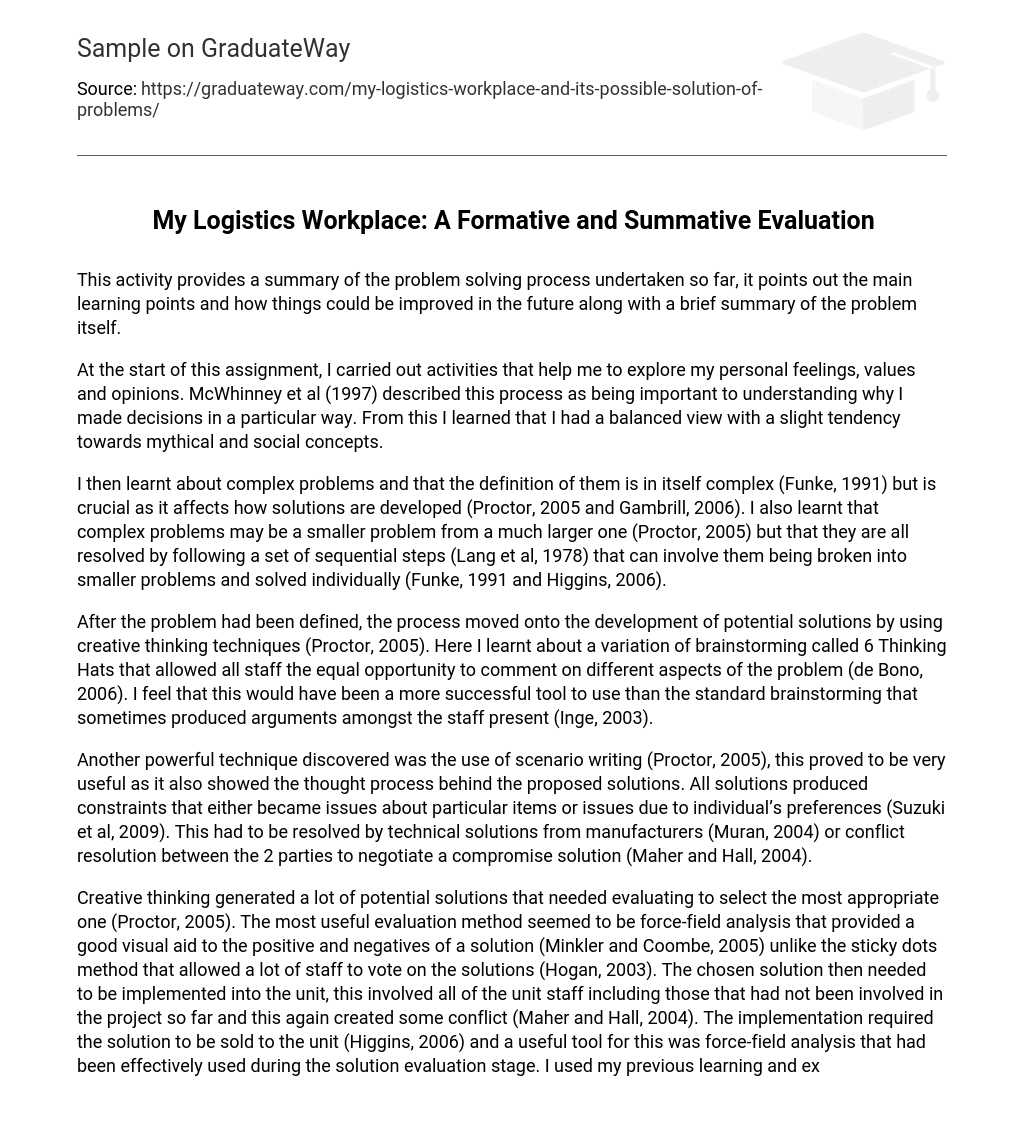This activity provides a summary of the problem solving process undertaken so far, it points out the main learning points and how things could be improved in the future along with a brief summary of the problem itself.
At the start of this assignment, I carried out activities that help me to explore my personal feelings, values and opinions. McWhinney et al (1997) described this process as being important to understanding why I made decisions in a particular way. From this I learned that I had a balanced view with a slight tendency towards mythical and social concepts.
I then learnt about complex problems and that the definition of them is in itself complex (Funke, 1991) but is crucial as it affects how solutions are developed (Proctor, 2005 and Gambrill, 2006). I also learnt that complex problems may be a smaller problem from a much larger one (Proctor, 2005) but that they are all resolved by following a set of sequential steps (Lang et al, 1978) that can involve them being broken into smaller problems and solved individually (Funke, 1991 and Higgins, 2006).
After the problem had been defined, the process moved onto the development of potential solutions by using creative thinking techniques (Proctor, 2005). Here I learnt about a variation of brainstorming called 6 Thinking Hats that allowed all staff the equal opportunity to comment on different aspects of the problem (de Bono, 2006). I feel that this would have been a more successful tool to use than the standard brainstorming that sometimes produced arguments amongst the staff present (Inge, 2003).
Another powerful technique discovered was the use of scenario writing (Proctor, 2005), this proved to be very useful as it also showed the thought process behind the proposed solutions. All solutions produced constraints that either became issues about particular items or issues due to individual’s preferences (Suzuki et al, 2009). This had to be resolved by technical solutions from manufacturers (Muran, 2004) or conflict resolution between the 2 parties to negotiate a compromise solution (Maher and Hall, 2004).
Creative thinking generated a lot of potential solutions that needed evaluating to select the most appropriate one (Proctor, 2005). The most useful evaluation method seemed to be force-field analysis that provided a good visual aid to the positive and negatives of a solution (Minkler and Coombe, 2005) unlike the sticky dots method that allowed a lot of staff to vote on the solutions (Hogan, 2003). The chosen solution then needed to be implemented into the unit, this involved all of the unit staff including those that had not been involved in the project so far and this again created some conflict (Maher and Hall, 2004). The implementation required the solution to be sold to the unit (Higgins, 2006) and a useful tool for this was force-field analysis that had been effectively used during the solution evaluation stage. I used my previous learning and experience of this tool to fulfil a new purpose (Moon, 1999) which proved to be very effective.
Every implementation plan will have its associated risks that must be identified and managed (OGC, 2007). I learnt about how to categorise the risks (BSI, 2000) and also a new process called Project Risk Failure Modes and Effects Analysis (Carbone and Tippett, 2004) that added another dimension to the risk detailing how easy it was to detect.





